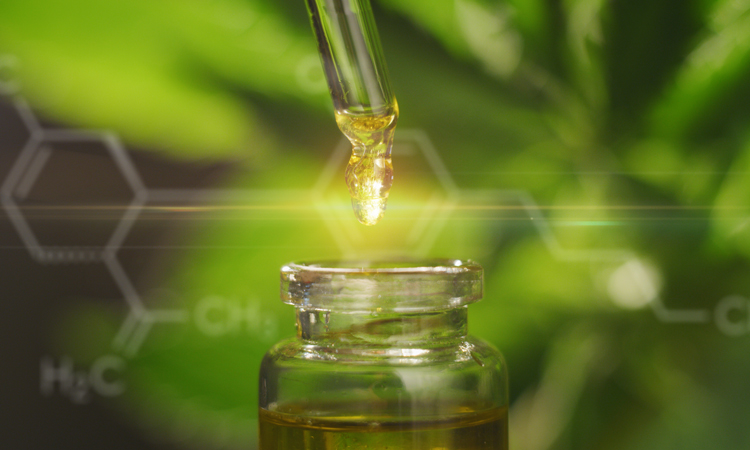Regulating heavy metals in cannabis: what can be learned from the pharmaceutical industry?
Posted: 20 February 2020 | Robert J Thomas (Scientific Solutions) | No comments yet
The ever-increasing demand for cannabis-based products requires US state regulators to set guidelines that ensure products are safe for human use. However, as medicinal cannabis moves forward at a rapidly increasing pace, regulations are falling behind. Here, Robert Thomas discusses the many inconsistencies across US states for monitoring levels of elemental contaminants in cannabis-based products and suggests that the pharmaceutical community could offer some much-needed guidance on how best to prepare the cannabis industry for federal oversight.




Unfortunately, many of the states in which CBD products have been legalised do not have the necessary experience and background to fully understand all the safety, quality and toxicological issues regarding the cultivation and production of cannabis and hemp products currently on the market. Besides the need to characterise its potency (CBD and THC content) and other beneficial compounds such as terpenoids, one of the most important contaminants to measure is the level of heavy metals, because cannabis and hemp will avidly accumulate trace elements from the growing medium, soil, fertilisers and even the metallic equipment used during the preparation and processing of the various concentrates and oils. For that reason, it is critically important to monitor heavy metals in cannabis and hemp to ensure that products are safe for human consumption.
Regulating cannabis and hemp
The demand for cannabinoidbased products is moving so fast that the scientific community is unable to keep up”
The lack of federal oversight with regard to heavy metals in medicinal cannabis products in the US has resulted in each state individually regulating its use. Medical cannabis is legal in 34 states, while 12 states, including Washington, DC, allow its use for adult recreational consumption. However, the cannabis plant is known to be a hyper-accumulator of heavy metals in the soil. It is therefore critical to monitor levels of elemental contaminants to ensure cannabis products are safe to use. Unfortunately, there are many inconsistencies with heavy metal limits across those states where cannabis is legal. The vast majority of states define four heavy metals: Pb, As, Cd and Hg. Some base their limits directly in the cannabis, while others are based on human consumption per day. Others take into consideration the body weight of the consumer, while some states do not have any heavy metal limits. Certain states only set limits on heavy metals in the cannabis plant/flower, while some give different limits for the delivery method such as oral, inhalation or transdermal.1 This makes it extremely complicated from a regulatory perspective because currently all regulations apply only in the state where the cannabis is grown, processed and sold. Furthermore, since the federal government still considers cannabis a Schedule I drug (the same as heroin), there can be no interstate commerce with regard to cannabis products. However, in 2020, it will be legal to grow hemp anywhere in the US for the production of CBD-based and other industrial products (note: hemp is a variant of the cannabis plant, which contains <0.3 percent THC). It will be interesting to see how the US Department of Agriculture regulates the industry at the federal level, when cannabis is regulated by the individual states.
What can be learned from the pharmaceutical industry?
Clearly there is a need for more consistency across state lines, particularly as the industry inevitably moves in the direction of being federally regulated. The cannabis industry can learn a great deal from the pharmaceutical industry; it went through this process over 20 years ago when it updated its 100-year-old qualitative sulfide precipitation test for an undefined suite of heavy metals2 to eventually arrive at a list of 24 elemental impurities in drug products using plasma spectrochemical techniques.


The beginning of the journey to regulate elemental impurities in pharmaceuticals in the late 1990s can be likened to the production of cannabis and hemp-derived products today; where the source of elemental contaminants is not fully understood. In particular, the elemental toxicological guidelines to regulate the cannabis industry are being taken very loosely from a combination of methods and limits derived by the pharmaceutical, dietary supplements, food, environmental and cosmetics industries. Even though the process of manufacturing cannabis products might be similar in some cases to drugs and herbal medicines, the consumers of cannabis and hemp products are using them very differently and in very different quantities – particularly compared to pharmaceuticals, which typically have a maximum daily dosage. The bottom line is that heavy metal toxicological data generated for pharmaceuticals over several decades cannot simply be transferred to cannabis, hemp and their multitude of products.
There are many inconsistencies with heavy metal limits across the states where cannabis is legal”
An added complication is that the cannabis and hemp plant can not only absorb heavy metals from the soil, but also from contaminants in fertilisers, nutrients, pesticides and the growing medium as well as other environmental pathways. Additionally, the process of cutting, grinding and preparing the cannabis/hemp flowers for extraction can often pick up elemental contaminants from the stainless-steel manufacturing equipment. Finally, the cannabinoid extraction process will extract different amounts of heavy metals, depending on the solvent and/or the extraction process used, which could possibly end up in the finished products. In addition, some cultivators will use nutrients containing metal-based bud/flower enhancers, which would not be picked up by the state regulatory process. It is also worth noting that the equipment used to deliver these products to consumers, such as inhalers and vaporisers, can expose the user to further sources of elemental contaminants from components inside these devices, in addition to what is in the cannabinoid compound itself.
Phytoremediation properties of cannabis and hemp
Cannabis and hemp are known to be hyperaccumulators of contaminants in the soil; they have been used to clean up toxic waste sites where other kinds of remediation attempts have failed. In the aftermath of the Chernobyl nuclear meltdown in Ukraine in 1986, industrial hemp was planted to clean up the radioactive isotopes that had leaked into the soil and ground waters. Of course, Chernobyl is an extreme example of heavy metal and radionuclide contamination, but as a result of normal anthropogenic activities over the past few decades – including mining, smelting, electroplating, gasoline exhaust, energy production, use of fertilisers, pesticides, waste treatment plants, lead-based paint and plumbing materials, etc – heavy metal pollution has become one of today’s most serious environmental problems. Given the diverse and varied conditions used for growing cannabis, it will be difficult to eliminate all these potential sources of pollution in order to reduce their impact on the plant’s biology.


There is therefore no question that the current suite of four heavy metals being required by statebased regulators is totally inadequate to ensure cannabis products are fit for human consumption. Based on evidence in the public domain, there are approximately 15 heavy metals found in natural ecosystems (soil, water and air) that could be potential sources of contaminants accumulated by the plant, including Pb, As, Hg, Cd, Ni, V, Co, Cu, Se, Ba, Ag, Sb, Cr, Mo, Mn, Zn and Fe. They might not all have a negative impact on the health of the plant during cultivation, but the chances that they will end up in the flowers and the final manufactured products are very high. Their levels of toxicity would need to be investigated further, but there is a case to be made that most could be the future basis of a federally-regulated panel of elemental contaminants in cannabis and hemp.6 For this reason, it is critically important to characterise all the potential sources of elemental contamination including the cultivation of the cannabis/hemp plant as well as the cannabinoid manufacturing process.
Testing procedures


As a result, I realised the pharmaceutical manufacturers had no previous experience using ICP-MS and would thus benefit from education about how to generate high-quality data when working at the ultra-trace level. This became the incentive to write my previous book, entitled Measuring Elemental Impurities in Pharmaceuticals.7 Once the book was published in March 2018, I then turned my attention to the cannabis and hemp industry and started talking to cultivators, growers, producers, processors, regulators and testing labs to gain a better understanding of what the industry needs with regard to its heavy metals’ testing requirements. This article represents an overview of some of the initial findings of my research and the final results will be published in the summer of 2020 in my latest book Measuring Heavy Metal Contaminants in Cannabis and Hemp: A Practical Guide.8
Final thoughts
Heavy metal toxicological data generated for pharmaceuticals over several decades cannot simply be transferred to cannabis, hemp and their multitude of products”
Our environment has experienced severe pollution from heavy metals, which has compromised the ability of our natural ecosystems to foster life and render its intrinsic values. Heavy metals are naturally occurring compounds, but anthropogenic activities introduce them in extremely large quantities into agricultural ecosystems. This is particularly evident in the delicate balance of growing cannabis and hemp for commercial, medicinal and recreational uses. Unfortunately, the demand for cannabinoid-based products is moving so fast that the scientific community is unable to keep up; whether it is testing of the products to ensure they are safe for human consumption or the medical research required to understand the biochemistry that is fundamental to treating a disease or ailment. The industry is both exciting and chaotic, but due to its unparalleled growth there appears to be little incentive to introduce sensible regulations. There is a clear need for a more comprehensive suite of elemental contaminants to be tested and to set the maximum limits on toxicological data based on the manner and quantity that cannabis products are consumed. For that reason, I firmly believe that researchers who are trying to raise the bar now will be rewarded when the FDA eventually starts regulating the industry. In the meantime, I am firmly committed to educating state regulators to better understand the potential sources of heavy metals in cannabis and hemp and to helping the laboratory testing community improve the quality of its data.
About the author
Robert J Thomas has worked in the field of atomic and mass spectroscopy for over 45 years and has served on the American Chemical Society (ACS) Committee on Analytical Reagents (CAR) for the past 19. In this role he leads the plasma spectrochemistry, heavy metals task force and has worked closely with the United States Pharmacopeia (USP) to align ACS heavy metal testing procedures with pharmaceutical guidelines. Rob has an advanced degree in analytical chemistry from the University of Wales, UK and is also a Fellow of the Royal Society of Chemistry (FRSC) and a Chartered Chemist (CChem). He is principal of his own consulting company Scientific Solutions and is currently working on his latest book, which will be published in the late summer of 2020. His website can be accessed here.
References
- Marijuana Policy by State: https://www.mpp.org/states/
- United States Pharmacopeia General Chapter <231> Heavy Metals Test in USP National Formulary (NF), https://www.usp.org/chemical-medicines/elemental-impurities-updates
- ICH Guideline Q3D on Elemental Impurities: Step 5, European Medicine Agency Website: https://www.ema.europa.eu/en/documents/scientific-guideline/international-conference-harmonisation-technical-requirements-registration-pharmaceuticals-human-use_en-13.pdf)
- United States Pharmacopeia General Chapter <232> Elemental Impurities – Limits: First Supplement to USP 40–NF 35, 2017, https://www.usp.org/chemical-medicines/elemental-impurities-updates
- United States Pharmacopeia General Chapter <233> Elemental Impurities – Procedures: Second Supplement to USP 38–NF 33, 2015, https://www.usp.org/chemical-medicines/elemental-impurities-updates
- Gauvin D, Zimmermann Z, Yoder J, Tapp R. Marijuana Toxicity: Heavy Metal Exposure Through State-Sponsored Access to “la Fee Verte”. Pharmaceutical Regulatory Affairs: Open Access. 2018;07(01).
- Thomas R J. Measuring Elemental Impurities in Pharmaceuticals. CRC Press, Boca Raton. FL, US, 2018, ISBN: 9781138197961
- Thomas R J. Measuring Heavy Metal Contaminants in Cannabis and Hemp: A Practical Guide. CRC Press, Boca Raton, FL, ISBN: 9780367417376, Available September 2020
Issue
Related topics
Analytical techniques, Cannabinoids, Drug Safety, Impurities, Ingredients, Medical Marijuana, QA/QC









